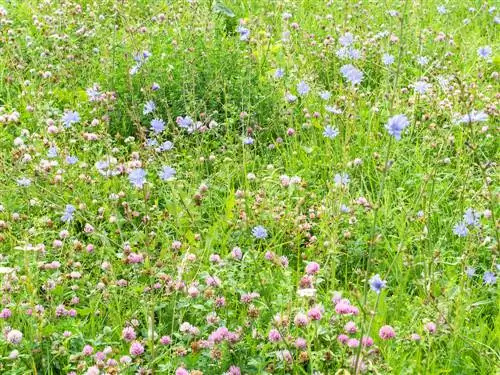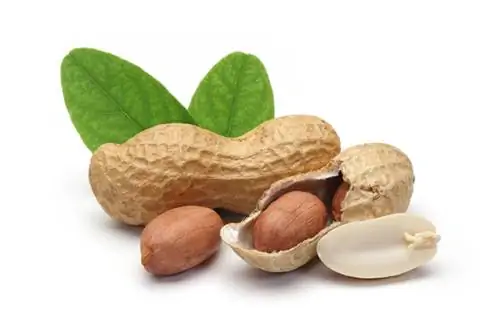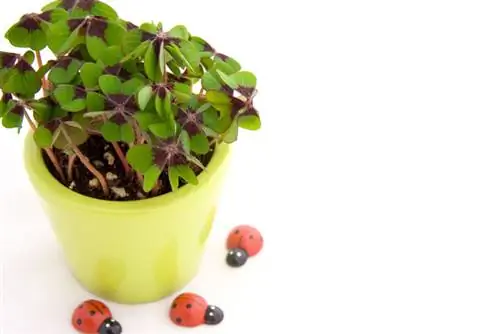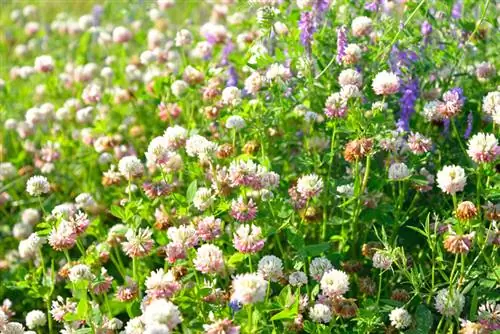- Author admin [email protected].
- Public 2023-12-16 16:46.
- Last modified 2025-01-23 11:22.
The genus Clover (Trifolium) includes 245 species. There are also related genera that are also referred to as clover because of the leaf shape typical of clover. With such a large family, it is not surprising that location preferences vary widely. Marvel for yourself!

Where can clover grow and thrive?
Clover finds habitable locations on all continents and is adapted to different climatic regions. Natural habitats can be alps, wet meadows, fields, roadsides and roadsides, forests or dry grasslands. Locations such as flower beds, pond edges or lawn replacement areas are suitable in the garden.
Where in the world can clover find life-friendly locations?
Suitable locations for clover offerall continents on earth without exception! Only in Australia has clover been introduced by humans. It occurs naturally on other five continents.
The genus is well adapted to various climatic regions, whether subarctic, subtropical or tropical. However, this does not mean that clover is widespread everywhere or to the same extent. Individual varieties also show certain location preferences. The highest biodiversity can be found in the Mediterranean region.
Where does “wild” clover grow in this country?
It dependsvariety dependent, because each type of clover prefers a different habitat:
- Alpine clover: Alps from 1700 m altitude
- Bitter clover: wet meadows and pond edges
- Field clover: poor meadows, fields and lawns
- Yellow sweet clover: stony roadsides and fields
- High sweet clover: s alty, calcareous and nitrogenous soils
- Horn trefoil: pastures, pine forests, heath and seacoast
- Horn sorrel: warm, dry places, house lawn
- Red clover: fat meadows, sparse forests
- Sorrel: nutrient-rich fields, roadsides, gardens
- Snail clover: dry meadows and dry grassland
- White sweet clover: roadsides, rubble dumps, gravel pits, railway systems
- White clover: nitrogen-rich meadows and fields
Where can clover be grown specifically?
Many types of clover are suitable as livestock feed or green manure. That's why they have been grown on agricultural land for decades. These are usually field clover, horn clover or red clover as well as the non-hardy red clover substitute alexandrine clover.
Sowing is possible in principlealmost throughout Germany. Location requirements for the cultivation area are based on the natural location of the variety. As a result, red clover requires a nutrient-rich field; field clover seeds grow in poor soil.
Which places in the garden can be planted with clover?
Property owners consider clover a weed when it “takes over” the beautiful lawn or peeks out from cracks in stones. But the plant also has a decorative character as long as it receives the right care. Depending on the variety and purpose of planting, differentlocations are possible:
- Upright wood sorrel as an ornamental plant in the flower bed, sunny to partially shaded
- Potted lucky clover, also known as four-leaf clover or Oxalis tetraphylla
- Bitter clover for pond edge planting
- White clover as a sturdy lawn replacement
- Red or white clover as green manure in the garden bed
Tip
Don't tear out unwanted clover straight away, check its usability first
Don't act hastily if clover has taken over a spot in the garden uninvited. First check whether it can possibly be useful to you. Many types of clover are edible in small quantities. Red clover, for example, which also has a healing effect.






